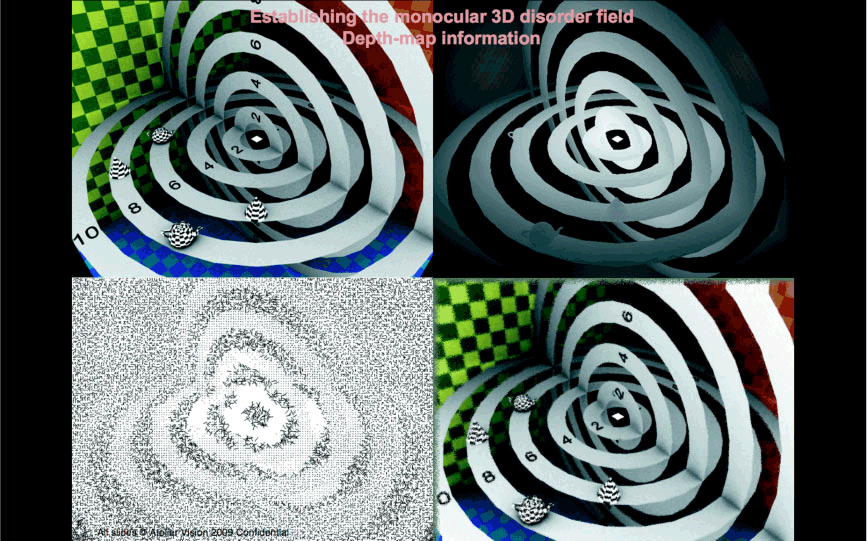Following the granting of an initial patent, a commercial initiative to create first generation perceptual technology was made between 2007-13 through the start-up Perceptual Technologies Ltd.
TRIZ problem solving conducted in the USA confirmed Vision-Space as a paradigm shift for all forms of information display technologies and the way we interface with them. It is seriously disruptive technology with over two hundred applications identified across twelve industries for the first patent alone. No prior-art was listed anywhere in the world for the now lapsed patents.

There will be new gaming genres, new ways to advertise, new degrees of freedom for film directors and animators with respect to storytelling and the manipulation of the audience’s immersion. New simulators and new implications for artificial intelligence. We will have more immersive visual media with a form of three dimensionality commensurate with experiential reality. We be able to move on from medial picturing to genuine medial imaging systems with embedded three dimensionality. There will be a new range of data-capture systems and new implications for observations at remote scales. There will considerations for longterm space exploration, situations where lighting conditions commensurate with terrestrial settings are limited. Education and learning will be affected with the inherent danger of over exposure to non-perpetually structured media for the young and old researched, evaluated and accounted for. Eye tests will be developed to interface with our sense of implicit spatial awareness. This list is not exhaustive.

A proof of concept post production tool (PPT) was created with angel funding from the United States utilising the UK’s world leading pool of gaming programmers. Computer generated (CG) picture media outputted in frames per-second was converted by the software to frame based Vision-Space image sequences.
While the plan was always to supersede this early proof of concept demonstrator with a frameless imaging system involving the deconstruction of a gaming engine, the required funding could not be raised in the UK. Apparently within investor circles, “there is no appetite for this sort of thing!” Government support agencies didn’t ”believe in” or understand the TRIZ breakdown or the identified commercial potentials or the interest shown by multinational companies in licensing base perceptual technology. Sadly, but perhaps predictably, the UK’s H igher Education Institutes are still not orientated to collaborate on commercial start-up enterprises. It is abundantly clear that UK remains ill equipped to respond, support, pursue or develop the breakthrough opportunities created by its citizens.

Radial depth map used to distribute proximity cues in the form of incrementally increasing disorder from the fixation point at the centre.
The PPT is now available as open source code and an outline for next stage development is available.

©2024